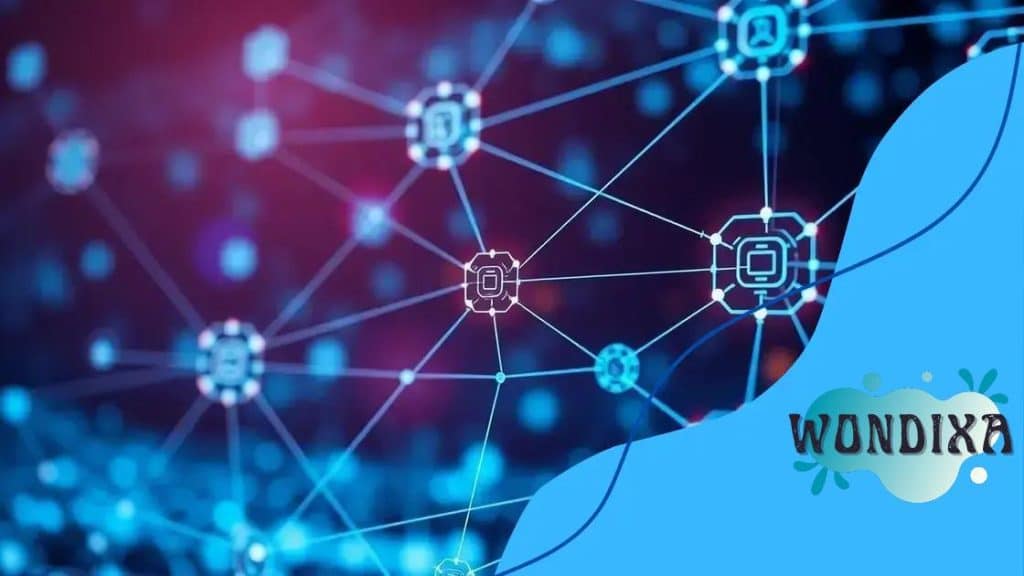The rise of decentralized internet technologies is changing everything

The rise of decentralized internet technologies empowers users by providing greater control over their data, spurring innovation, and fostering community-driven platforms while facing challenges related to scalability and regulation.
The rise of decentralized internet technologies is not just a trend; it’s reshaping our digital landscape. Have you considered how this impacts your online interactions and privacy? Let’s dive in!
Understanding decentralized internet concepts
Understanding decentralized internet concepts is crucial for anyone interested in the future of online interactions. The idea revolves around moving away from centralized control, giving users more freedom and privacy. Imagine a world where your data isn’t owned by a few big companies but instead is controlled by you.
What is decentralization?
Decentralization refers to distributing control away from a central authority. In the context of the internet, it means creating platforms where power is shared among users instead of being concentrated in the hands of a few.
Key features of decentralized networks
- User empowerment: Users have control over their data.
- Enhanced security: Systems are less vulnerable to single points of failure.
- Transparency: Operations are more open and trustable.
- Increased resilience: Networks are less likely to fail due to central disruptions.
Decentralized networks utilize technologies like blockchain and peer-to-peer connections to achieve these goals. This means that instead of relying on a central server, data and services are spread across many nodes. Each node can communicate and share information without needing a central point.
This way of thinking about the internet affects several aspects of our daily lives. For example, decentralized finance (DeFi) allows individuals to perform transactions without banks, reimagining the financial landscape. In social media, platforms that are decentralized give users the power to regulate their interactions, which could reduce instances of censorship.
Examples of decentralized technologies
Many technologies are paving the way for a more decentralized internet. Let’s mention a few:
- Blockchain: The backbone of cryptocurrencies, facilitating secure transactions.
- IPFS: A protocol for storing files in a decentralized manner.
- Matrix: A decentralized communication protocol for messaging.
Understanding these concepts can help you navigate the changing landscape of the internet. The transition from centralized to decentralized systems offers exciting opportunities for innovation and user control. As you explore these ideas, consider how they might apply to your own digital experiences.
Key benefits of decentralized technologies
The key benefits of decentralized technologies are transforming the way we interact online. By removing central authorities, these technologies offer greater freedom, security, and privacy for users.
User control over data
With decentralization, users gain control of their own data. This means personal information is owned by individuals, not corporations. When you share your data, you decide how it’s used.
Enhanced security
Decentralized networks are often more secure. Because there is no central point of failure, they are less vulnerable to attacks. If one node goes down, others keep the system running smoothly.
- Less risk of hacks: No central database to target.
- Robust systems: Multiple backups across nodes.
- Immunity to censorship: No single entity can control access.
This security makes decentralized systems appealing for various applications, including finance and communications. More importantly, users can transact safely without trusting a central authority. This leads to a more transparent environment.
Cost efficiency
Decentralized platforms can lower costs. Users often avoid fees charged by intermediaries since transactions occur directly between parties. This is especially significant in finance, where traditional banking fees can be quite high.
As a result, services can be offered at a fraction of the cost. Additionally, decentralized models can reduce overhead for companies, enabling them to pass savings onto consumers.
Incentivized participation
Many decentralized systems reward users for their participation. In blockchain networks, for instance, users can earn tokens for validating transactions. This creates a sense of ownership and encourages engagement.
- Community-driven growth: Everyone has a stake.
- Motivation to maintain the network: Users benefit directly.
- Innovation through collaboration: Diverse ideas flourish.
The benefits of decentralized technologies highlight a shift towards a more equitable internet. Emphasizing user control, enhanced security, cost efficiency, and community involvement, it’s clear how these advantages can reshape our digital experiences.
Challenges facing decentralized networks

Challenges facing decentralized networks are important to understand as these technologies grow. While there are many advantages, decentralization also comes with unique hurdles that must be addressed.
Scalability issues
Scalability is one of the primary concerns with decentralized systems. As more users join, maintaining performance can be difficult. Centralized systems handle large volumes of data easily, but decentralized networks often struggle to keep up without sacrificing speed or efficiency.
- Transaction speed: Increased users can slow down processing times.
- Storage limitations: More nodes require more space.
- Protocol complexity: As systems grow, managing them becomes harder.
These issues can deter users from adopting decentralized technologies, as they seek responsive and efficient services. A balance must be found to ensure usability without compromising the core values of decentralization.
User adoption barriers
For decentralized networks to thrive, user adoption is crucial. Many people still prefer familiar centralized systems. It can be challenging to convince them to switch.
Users often find decentralized platforms more complex. They may need to learn new technologies and understand concepts like wallets and private keys. This required knowledge can be a barrier for those who are not tech-savvy.
- Education and training: Users need guidance to navigate new systems.
- Trust issues: Some individuals may doubt the security of new technologies.
- Fragmented user experiences: Different platforms can create confusion.
Even with these hurdles, educating users about the benefits of decentralization is key to overcoming adoption challenges.
Regulatory concerns
Decentralized networks often face scrutiny from regulators. Governments may be uncertain about how to classify these technologies. This uncertainty can lead to restrictive policies that hinder growth.
For instance, cryptocurrencies have been viewed with skepticism due to potential misuse. This regulatory environment can stifle innovation in decentralized applications.
- Compliance requirements: Navigating regulations can be complex.
- Legal uncertainties: Changing laws can create instability.
- Potential for banning technologies: Some regions may outlaw decentralized services.
Addressing these challenges is essential for the successful growth of decentralized networks in the digital landscape.
Real-world examples of decentralization
Real-world examples of decentralization illustrate how these technologies are transforming various industries. The impact of decentralized systems is evident in finance, communication, and even social media.
Decentralized finance (DeFi)
One of the most prominent examples of decentralization is in finance through DeFi. This system allows users to trade, lend, and borrow without banks. With DeFi, the power lies with the users.
- Uniswap: A decentralized exchange that allows users to swap cryptocurrencies directly.
- Aave: A lending platform where users can lend and borrow assets without intermediaries.
- MakerDAO: A system that lets users create a stablecoin called DAI, backed by their assets.
These platforms demonstrate how DeFi is reshaping our financial landscape by reducing reliance on traditional banking.
Decentralized autonomous organizations (DAOs)
DAOs are another exciting example of decentralization. These organizations operate without centralized leadership, instead relying on smart contracts to govern themselves.
In a DAO, every member participates in decision-making, which enhances community involvement. Members vote on proposals and share the profits, making governance truly decentralized. Popular DAOs include:
- Dash: A DAO for funding projects and community initiatives.
- Aragon: A platform that allows users to create and manage their own DAOs.
- MolochDAO: A community dedicated to funding Ethereum projects.
DAOs show how businesses can operate in a shared, decentralized manner, promoting fairness and transparency.
Decentralized social networks
Social media is undergoing a shift towards decentralization, with platforms that prioritize user control. Decentralized social networks give users the ability to own their content and data.
Examples like Mastodon and Diaspora allow users to connect without a central authority interfering. These platforms enhance user privacy and reduce the risk of censorship. Users can create their own communities and manage their interactions according to their terms.
- Mastodon: A federated platform where users can join different servers.
- Peepeth: A decentralized alternative to Twitter that rewards users for positive contributions.
- Scuttlebutt: A peer-to-peer platform for communication without the internet.
These real-world examples clearly demonstrate how decentralization is influencing various sectors and changing how we interact with technology.
Future implications of the decentralized internet
The future implications of the decentralized internet are vast and could significantly change our digital experiences. As technology evolves, we may see a shift in how we access and control our information.
Empowered users
One major implication is the empowerment of users. As decentralized systems become more mainstream, individuals will be able to control their own data.
This control means that users can decide who accesses their information and how it is used. By putting power back into the hands of the people, the decentralized internet aims to enhance privacy and security. Users will no longer have to rely on trusted third parties to manage their data.
Innovation in services
The decentralized internet will likely spur innovation across many sectors. With fewer barriers to entry, new businesses can emerge, providing unique services.
These new services often prioritize user needs, and the focus shifts from profit-driven motives to community-driven solutions. Decentralized finance (DeFi) platforms already exemplify this shift by offering financial services without intermediaries.
- Tokenization: Digital assets can represent ownership in various forms, offering new investment opportunities.
- Smart contracts: These self-executing contracts streamline transactions and reduce reliance on traditional legal frameworks.
- Collaborative economies: Users can share resources, lowering costs and improving accessibility.
As innovation continues, the potential for improved user experiences is significant.
Regulatory adaptation
The rise of decentralized technologies will challenge traditional regulatory frameworks. Governments worldwide will need to adapt to this new landscape.
New regulations might focus on ensuring user safety without stifling innovation. Striking a balance will be essential to foster growth while protecting consumers.
- Legal recognition of decentralized entities: Governments may need to define how DAOs and other decentralized organizations are classified.
- Consumer protection: Policies might evolve to safeguard users interacting with decentralized networks.
- Tax regulations: Understanding taxation for decentralized transactions will be crucial for compliance.
This regulatory evolution will shape the future of online interactions and the broader digital economy.
Societal impact
As decentralized networks grow, they could strengthen community ties. People may connect more deeply with others who share similar interests and goals.
This shift towards community-driven platforms may lead to a cultural renaissance where unique voices and ideas can flourish unchallenged by centralized control. A more diverse array of opinions will create rich discussions and solutions.
Overall, the decentralized internet holds the potential to create a more equitable and user-friendly digital world. By empowering users, encouraging innovation, and adapting regulations, we may witness a transformational change in how we interact online.
The future of the decentralized internet is bright and full of possibilities. With empowered users gaining control over their data, we can expect more innovation in services. As these networks grow, they will redefine how we interact online. However, challenges remain in scalability, user adoption, and regulation. Addressing these challenges will be key to unlocking the potential of a truly decentralized digital world. By fostering a culture of community, transparency, and creativity, the decentralized internet can lead to better user experiences for everyone.
FAQ – Frequently Asked Questions about Decentralized Internet
What is a decentralized internet?
A decentralized internet refers to a network where control and data ownership are distributed among users rather than being concentrated in central authorities.
How does decentralization enhance user privacy?
Decentralization gives users control over their own data, allowing them to choose who accesses it and how it’s used, thereby enhancing privacy.
What are some real-world examples of decentralized technologies?
Examples include decentralized finance (DeFi) platforms like Uniswap and decentralized social networks like Mastodon.
What challenges do decentralized networks face?
Challenges include scalability issues, user adoption barriers, and regulatory uncertainties that must be addressed for growth.





